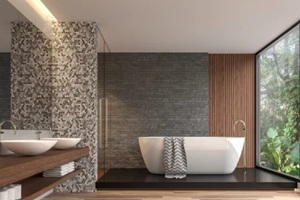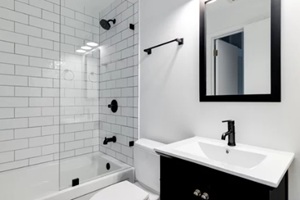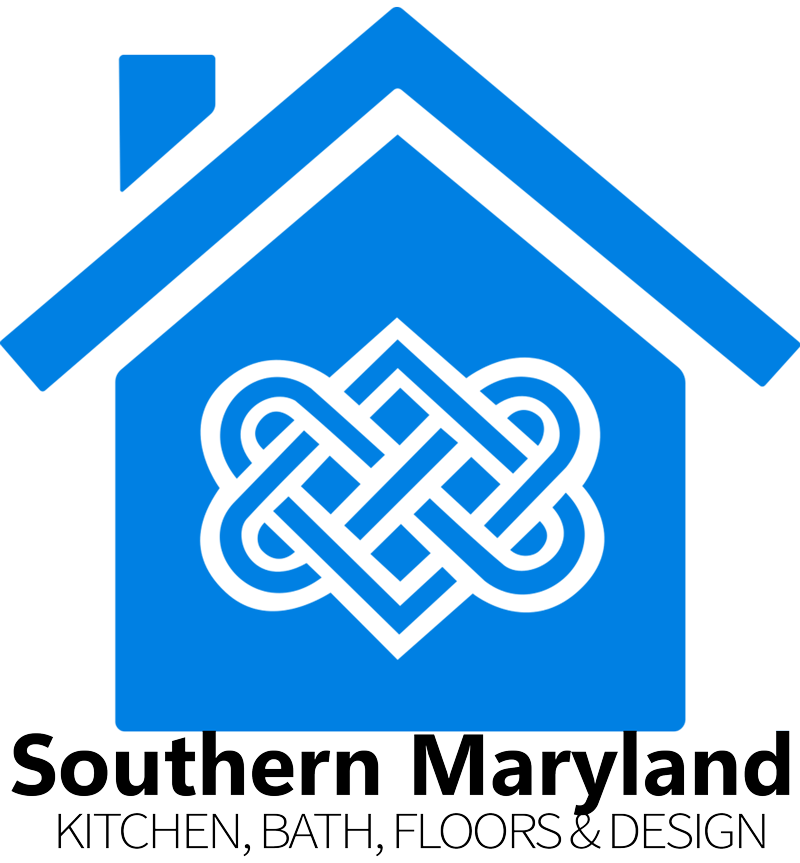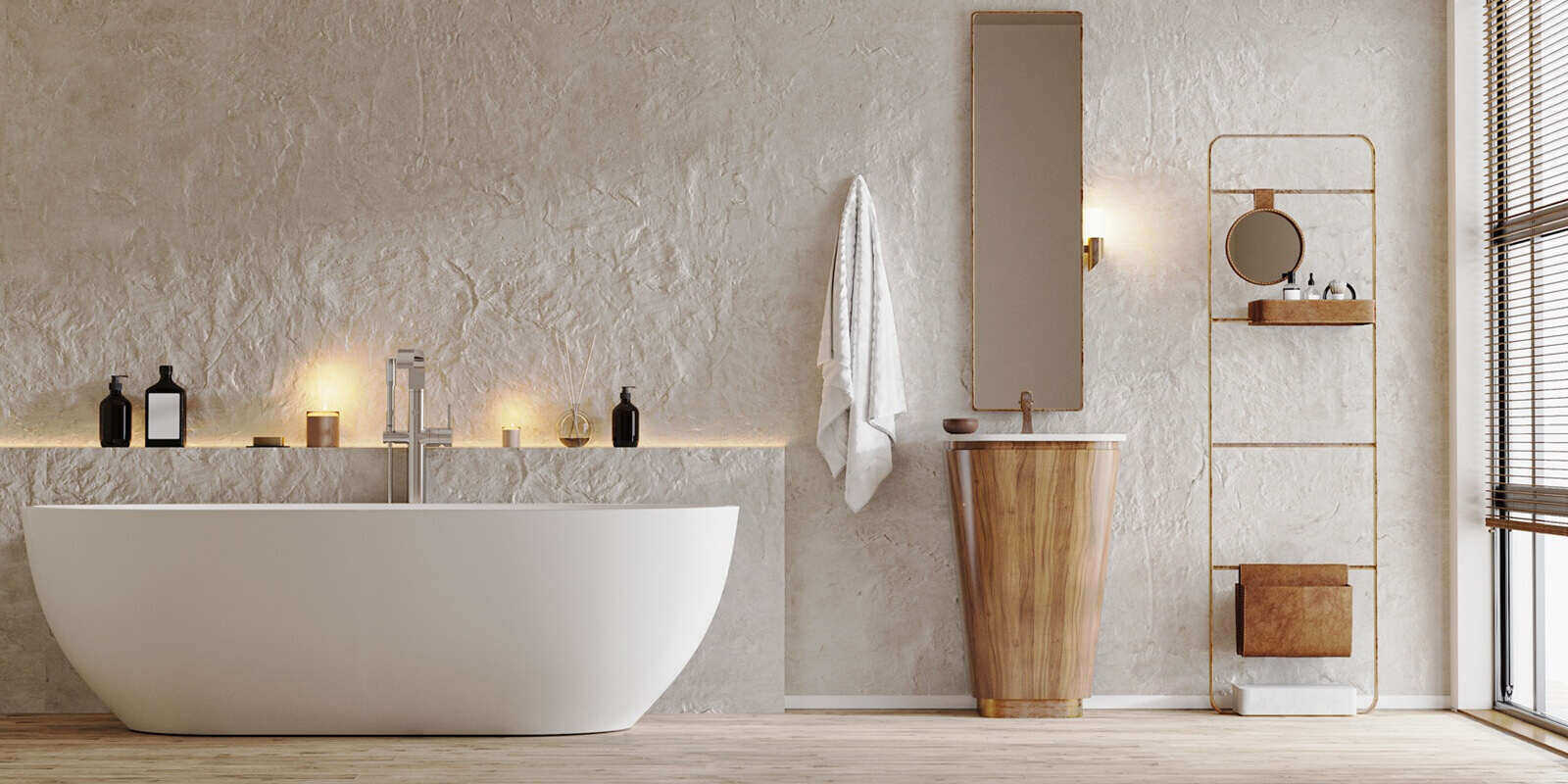
Choosing the right materials for a bathroom remodel is one of the most important decisions that homeowners can make for this project. The materials have the ability to enhance the appeal of the room while increasing its durability. This is significant for bathroom remodeling beyond functionality as the high-humidity environment can damage certain materials, leading to costly repairs.
This blog explains the pros and cons of various materials for a stylish and long-lasting bathroom design. For homeowners, designers, and more, take advantage of the step-by-step process included for choosing the right materials for the job.
The Benefits of Choosing the Right Materials
Bathrooms are harsh environments for certain materials due to rapid temperature changes, high moisture and humidity, and daily use. The wrong materials can experience excessive wear and tear that reduces longevity and leads to undesirable results, including:
- Mold growth due to excess moisture
- Warping due to exposure to water and heat
- Staining due to chemical products, spills, and temperature changes
- Deterioration due to daily wear and tear
The right material choice can avoid these results by providing a long-lasting, low-maintenance bathroom design. Designers and homeowners investing in high-quality materials will reduce the need for costly repairs and remodels later. However, this requires knowing the difference between material types and the advantages they present to a modern bathroom design.
Key Material Types to Consider
These material types are the primary choices available to homeowners and designers as they plan their bathroom remodels. Choosing how each is implemented warrants careful consideration to avoid costly mistakes and unnecessary repairs.
Stone
Natural stone is a popular choice for bathroom floors because it is non-porous, water-resistant, and easy to maintain. Popular choices for bathrooms include granite, quartz, and other earth-toned stone. Stone provides a truly long-lasting construction to create bathroom floors that will last decades or even generations.
The applications of stone are not limited to floors, and can be used to commission high-end fixtures, counters, vanities, and more. Natural stone accents can bring out the charm and sophistication of a bathroom wall while maximizing its durability. For homeowners with the budget to spare, natural stone is a premier choice for long-lasting designs.
Hardwood
Since bathroom floors and walls need to be moisture-resistant, most designers decide against hardwood. However, wood has a place in bathroom designs in potential cabinet or storage arrangement, using a moisture-resistant wood (such as teak) or a moisture-resistant finish. High-quality laminate can provide the look and feel of wooden flooring with added water resistance.
Glass

With high-quality glass tile, homeowners and designers can prioritize durability without sacrificing style. Glass tile can be used in several bathroom installations, including floors, shower walls, and accents. However, since glass tile will crack when drilled, designers must think ahead when implementing it.
For enclosures like showers, the materials used for edging make a key difference in determining the viability of glass. Versatile designs can incorporate it creatively, provided they have expert guidance to account for its limitations.
Tile
Non-glass tile, usually made from ceramic or porcelain, is a common bathroom design choice for good reason. As both bathroom flooring and wall material, tile is easy to maintain and difficult to break. It resists moisture and temperature changes while providing a classic bathroom feel perfectly suited to everyday foot traffic.
Steps to Choosing the Right Materials for Your Bathroom
Homeowners can use these simple steps to choose the right materials for their bathroom remodels:
1. Learn What You Like
Bathroom designs should be durable, but they should also be appealing, fulfilling the vision that homeowners have for their space. Use online and real-world inspiration to determine the architectural look you want to help your designer match the vision to the right materials.
2. Create a Plan
A plan for a bathroom remodel should factor in the project’s limitations, goals, and budget. Different materials present different limits and costs that homeowners should understand before planning further.
3. Itemize Different Fixtures
Bathrooms are not remodeled in a single material; walls, floors, vanities, showers, and other fixtures should mix and match materials to deliver a balance between style, longevity, and cost. Experienced designers can help contextualize your vision for your space to determine which materials will work best for each aspect.
Schedule Your Bathroom Remodel Design Consultation

At Southern Maryland Kitchen & Bath, our experienced design team helps homeowners choose the right materials for their bathrooms to achieve their dream remodel. Our goal is to find a balance of materials that matches your stylistic vision and financial limitations while providing long-lasting functionality for years to come. For homeowners in Maryland, we make bathroom remodeling simple and reliable.
Contact our team today to learn how we can help you choose durable materials for your bathroom to maximize style, balance, and longevity in your next bathroom remodel.
Request Consultation
Meet with one of our skilled project specialists to get started.
"*" indicates required fields


